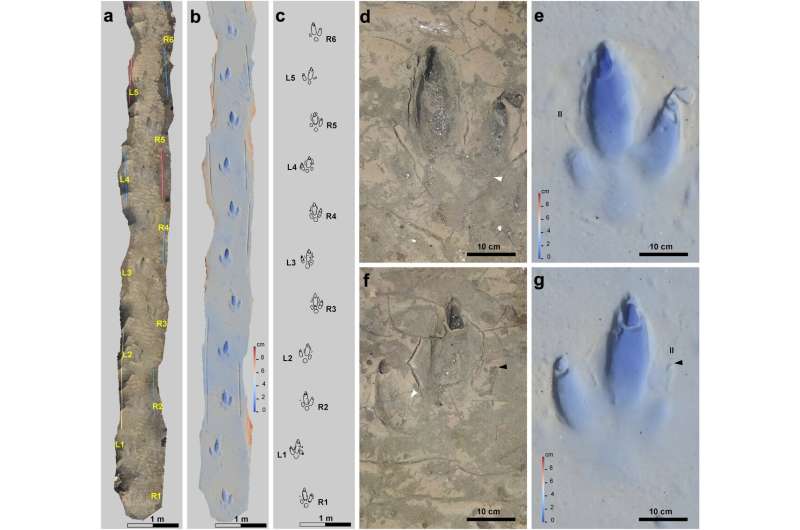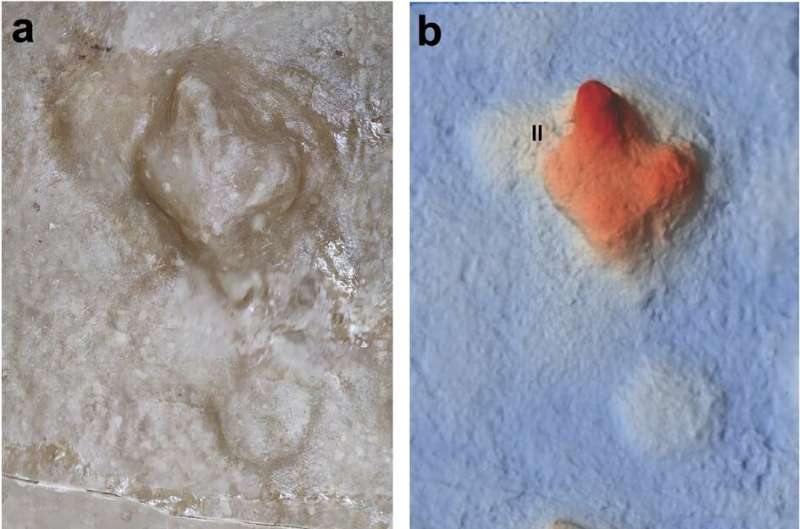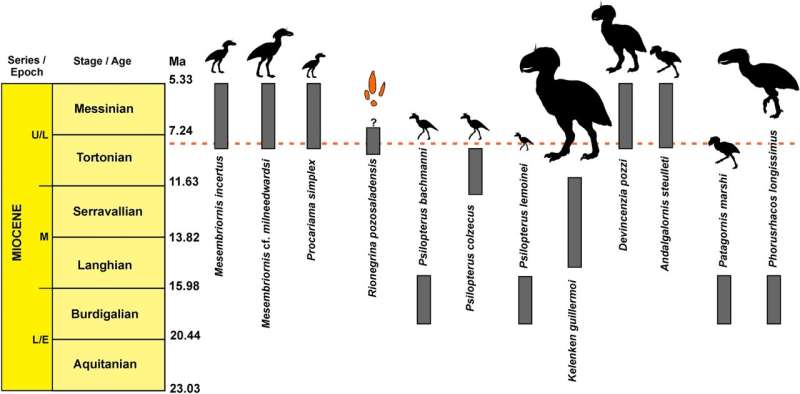October 13, 2023 report
This article has been reviewed according to Science X's editorial process and policies. Editors have highlighted the following attributes while ensuring the content's credibility:
fact-checked
peer-reviewed publication
trusted source
proofread
First known and well-preserved terror bird footprints found in Argentina

A team of paleontologists at Universidad Nacional de La Pampa, working with a colleague from LA. TE. Andes S.A, has found the first known well-preserved Phorusrhacidae footprints at a site in Argentina. In their paper published in the journal Scientific Reports, the team describes the site where the prints were found, their condition and what they have learned from them.
Phorusrhacidae (nicknamed "terror birds") were a group of ostrich-like birds that lived in South America during the Cenozoic in South America—there is also evidence that some species lived in North America and Africa. They were flightless birds with long legs and strong beaks. They obtained prey by chasing it down and then chopping it with their beak or slicing it with sharp claws.
Fossil finds have shown the birds ranged in height from 1–2 meters tall. They also had compact bodies, with the biggest birds weighing up to 70 kg. In this new effort, the research team found the first sample of well-preserved Phorusrhacidae footprints.

The prints were made by a medium-sized Phorusrhacidae, likely of the Mesembriornithinae subfamily. The team found them at a coastal outcrop on the San Matías Gulf in a small channel close to shore. Testing of the fossil substrate showed the tracks were formed approximately 8 million years ago.
The team found they showed evidence of wrinkle traces along with wave ripples due to cross-cutting. The tracks also had mud cracks along their boundaries. The researchers suggest that the tracks were made as the bird ran through a mudflat from a direction away from the coast. They estimate that it had a hip height of 0.81 m, and was running at a speed of 2.74 m/s. The depth of the tracks suggested the bird was of average weight, approximately 55 kg.

The research team suggests that the pattern of the footprints and the posture of the individual prints show that such birds had developed a clear adaption for running quickly and for killing the prey they ran down using a claw on their foot—similar in some respects, they note, to the way that Velociraptors killed their prey.
More information: Ricardo N. Melchor et al, First terror bird footprints reveal functionally didactyl posture, Scientific Reports (2023). DOI: 10.1038/s41598-023-43771-x
Journal information: Scientific Reports
© 2023 Science X Network





















